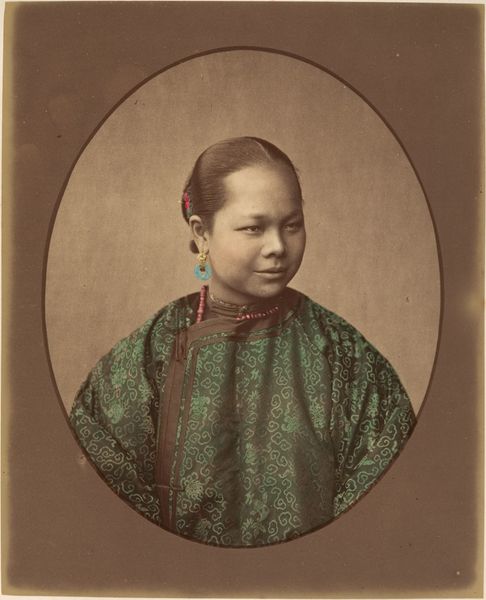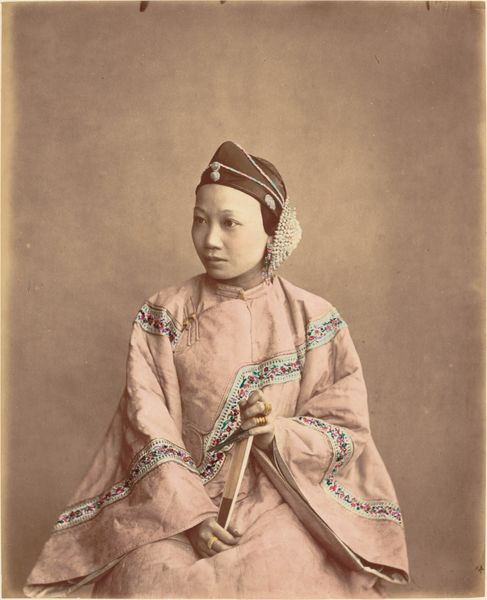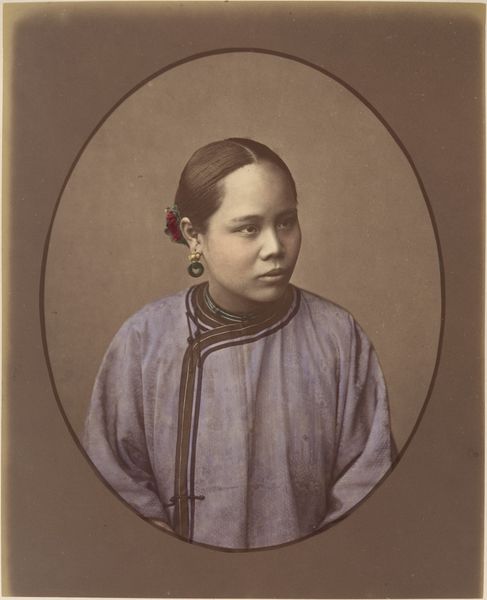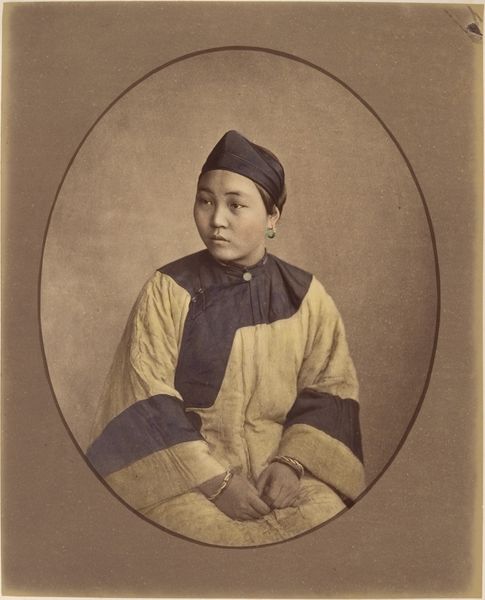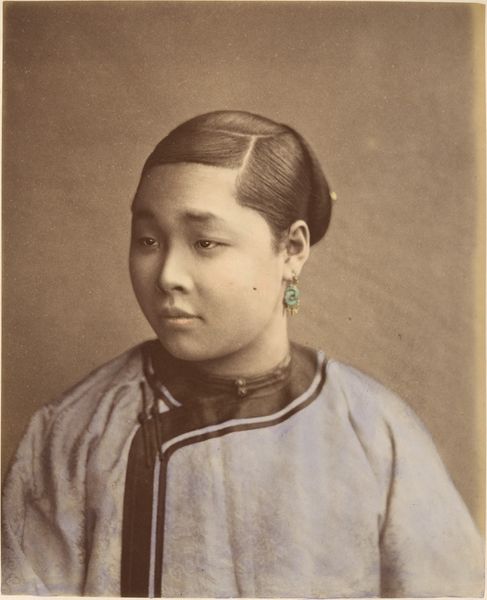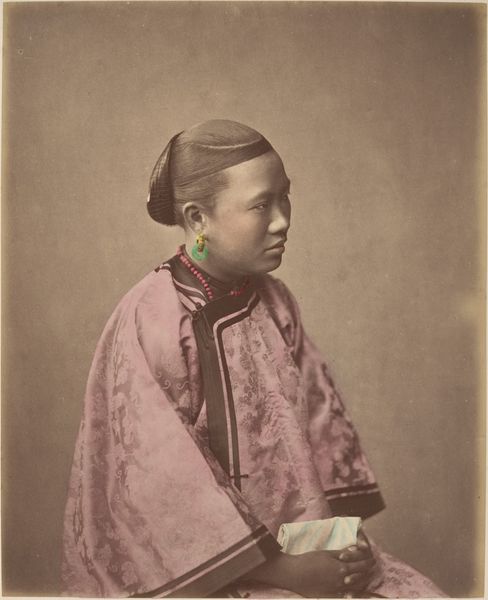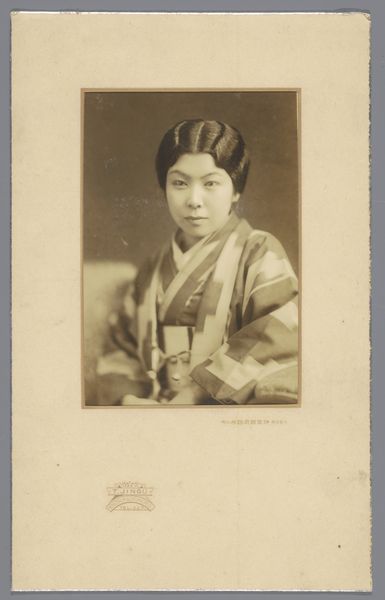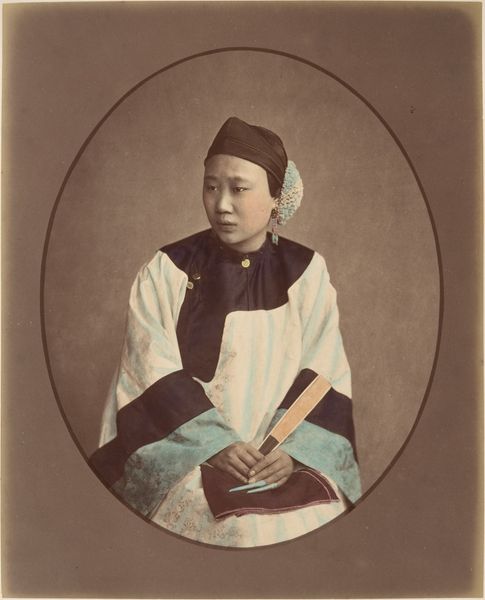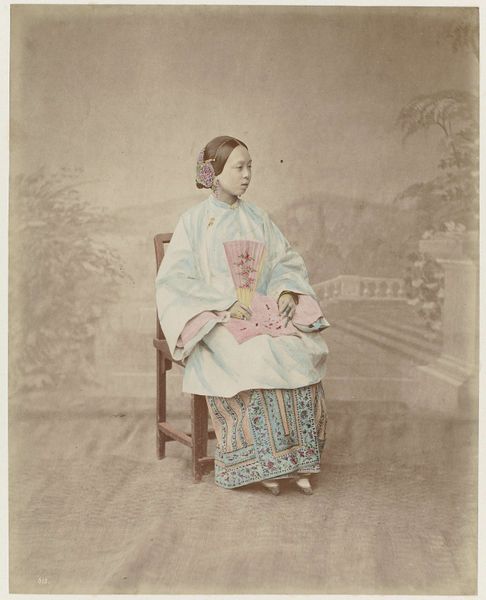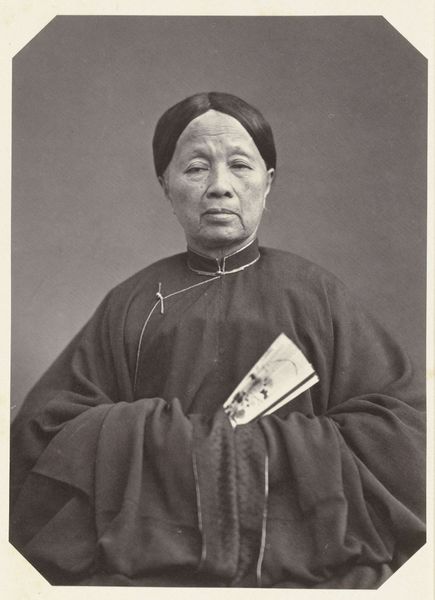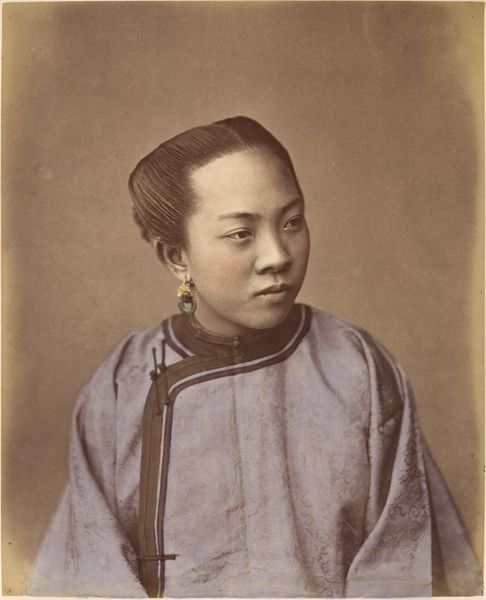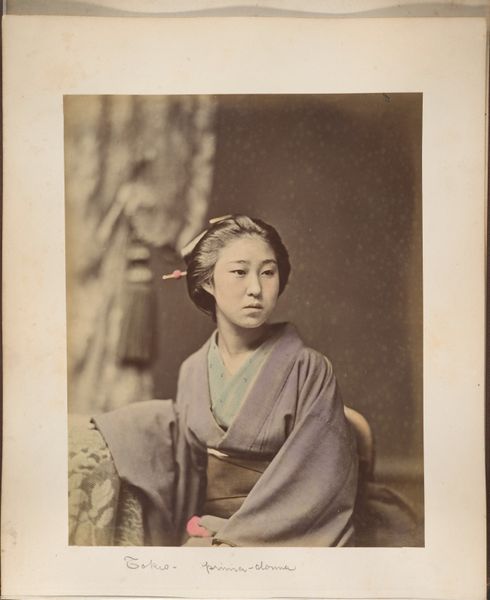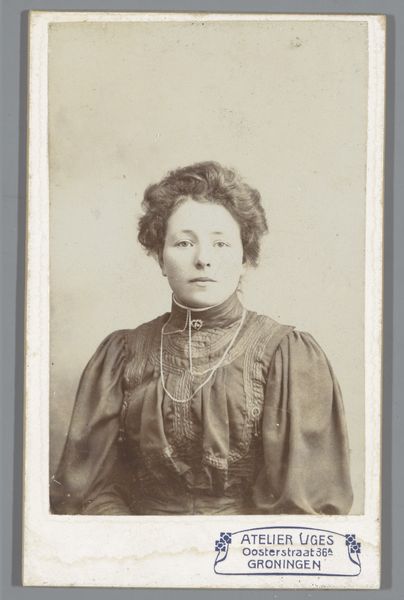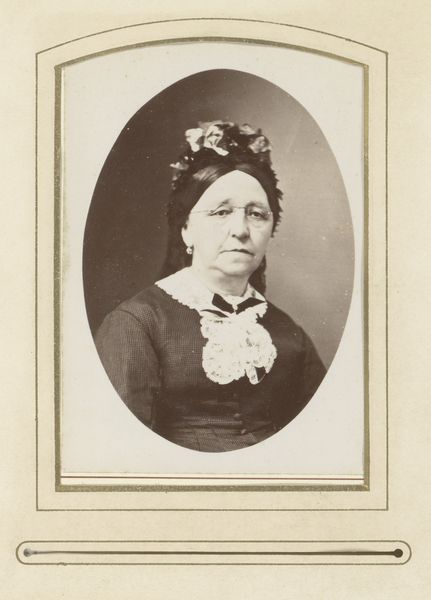
print, photography
#
portrait
# print
#
asian-art
#
photography
#
historical photography
#
historical fashion
#
orientalism
#
19th century
#
realism
Dimensions: 23.7 x 19.3 cm (9 5/16 x 7 5/8 in.)
Copyright: Public Domain
Curator: The delicacy is almost dreamlike; there's a diffused quality, like looking at a faded memory. Editor: Indeed. What we're viewing is a hand-colored albumen print dating from the 1870s. Its title is "Fille de Sootchow," or "Suzhou Girl," and it’s credited to Raimund von Stillfried. Curator: The composition itself is deceptively simple: the subject centered, framed by that oval. And yet, the artist achieves such depth! The textural interplay is key – look at the contrast between the smooth gown and the ornate headdress. Editor: Absolutely. And, of course, we must acknowledge that this image emerges from a specific historical context – the era of Orientalism. Such photography fulfilled a Western fascination with exoticized notions of the East. Curator: Do you feel, though, that this detracts from the artistic choices made? The gentle palette, the almost painterly application of color… It creates a striking formal beauty regardless of its context. Editor: It is difficult, I think, to disentangle form from content in this instance. This image participates in a visual language that often flattened non-Western identities for Western consumption. While the photographer demonstrates certain artistic skills, we cannot ignore how images like this bolstered a narrative of cultural difference. Curator: I suppose it depends on how one chooses to interpret it. Is she merely a figure to be consumed visually, or can we still perceive a sense of individuality despite the objectifying gaze? There is an undeniable stoicism in her expression. Editor: That stoicism could be read as a form of resistance, perhaps, within the constraints imposed by the photographic encounter itself. What do you take from the fan that she's holding in front? A fan can signal high rank, and also privacy... Curator: Perhaps the fan and its central position is another method used to counter an intimate glimpse into the life of an early Chinese subject. It’s a delicate balancing act, trying to see past the layers of cultural bias while still appreciating the artistry present. Editor: Precisely. And reflecting on that complexity allows us to engage more meaningfully with this work, and its place in the larger historical narrative of cross-cultural exchange.
Comments
No comments
Be the first to comment and join the conversation on the ultimate creative platform.
